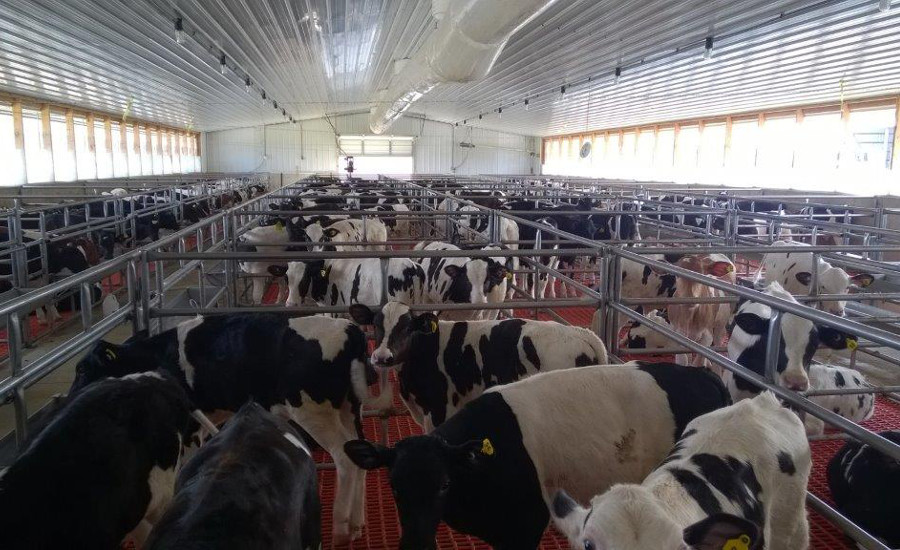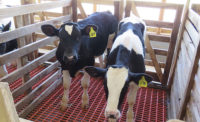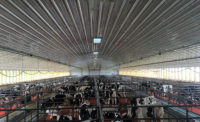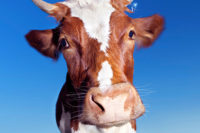State of the Industry
State of Veal: Producers making progress amid economic challenges

Despite the challenges of a difficult economic cycle, American veal producers continue to make progress in animal housing. It’s estimated that up to 85 percent of veal calves are now in group pen systems, well within striking distance of an industry goal to have the entire U.S. herd making the switch by the end of 2017.
“Consumers want safe, wholesome affordable food,” says Dale Bakke, president of the American Veal Association. “We share that interest. As veal growers, we are committed to providing the best care to calves at every stage of life. Innovation with group housing is one way we are leading the way to deliver on this obligation.”
More precise numbers are expected to be available next year, but Bakke says he believes more than three-quarters of U.S. veal calves are now in group settings.
Seeking profitability
As a difficult economic cycle continues, veal producers look to the future for a return to profitability. Supplies of veal calves are still well below historical levels because of the decline in overall beef cattle numbers in recent years. The cost of a baby calf has sky rocketed. Calves that sold for around $167 at this time last year are going for around $400 this year, according to Bakke.
“That’s a 140 percent increase,” he says. “In more than three decades in the veal business, I’ve never seen a bull calf cost this much.”
The good news is that the cost of dairy ingredients has come down so feeding costs are about one-third lower. Still, Bakke thinks relief is at least another year away.
“Corn prices increased to $4 a bushel this summer and we actually saw bull calf costs come down $40 or $50,” says Bakke. “But, when corn came back to $3.65 after USDA updated its yield estimate, we saw the bull calf price bounce back very quickly.”
The economic cycle has prompted industry structure changes similar to what has taken place previously in pork and poultry. Veal production this year is reportedly down about 14 percent as higher risk has caused some producers to cut back on production and others to leave the business. Calves are primarily owned by the feed companies or packers who contract with producers to raise them.
Praise for VQA
In the year ahead, some packers, processors and distributors will begin marketing veal under a claim utilizing the Veal Quality Assurance (VQA) program as the base. The program, funded by the veal producers through the beef checkoff, was updated in 2014 and certification is underway with formula-fed contract growers.
The updated program drew praise from Dr. M. Gatz Riddell Jr., executive vice president of the American Association of Bovine Practitioners.
“Making the veterinarian-client-patient-relationship (VCPR) pivotal to certification is an excellent step on a variety of levels,” Riddell says. “The recommendations which address violative residues are also excellent.”
Collaboration is also underway with the National Milk Producers Federation and the National Cattlemen’s Beef Association to strengthen quality assurance education to dairy producers regarding bob veal calves.
AVA leadership feels it is important for people to understand the difference between formula-fed calves, which produce 85 percent of U.S. veal, and bob veal calves. Formula-fed veal calves are raised to a live weight of 450 to 500 pounds producing a carcass around 270 to 290 pounds compared with carcass weight of around 30 to 100 pounds for a bob veal. Bob veal calves are typically sold directly from dairy farms, according to Bakke. Formula-fed veal calves, meanwhile, are raised by veal producers and receive a nutritionally balanced milk diet that contains iron and 40 other essential nutrients. Formula-fed veal are provided specialized housing and quality care during each stage of life.
Veal promotions
The Beef Checkoff-funded veal promotion program, managed by the North American Meat Institute, focuses on increasing demand for veal with current users, creating a position for veal with the Millennial demographic and channel decision makers. Veal had an exciting year with the launch of a new mobile friendly digital hub website — www.vealfoodservice.com — for all veal foodservice marketing efforts.
AVA stays engaged
The association stays abreast of federal regulations and FSIS initiatives regarding food safety and animal handling. The AVA submitted comments in August regarding a proposed rule: Requirements for the Disposition of Non-Ambulatory Disabled Veal Calves. The AVA believes the proposed rule is unnecessary and misleading. “We support the current regulation which allows calves that are tired and cold a period of time to rest upon arrival at the slaughter plant,” Bakke explains.
All veal calves must be ambulatory and pass inspection when presented for slaughter. Once an animal has rested, they typically stand on their own. If they don’t, current regulations appropriately stipulate that only healthy animals able to walk can be slaughtered.
Animal mistreatment is not condoned by the AVA. We have an ethical obligation to ensure only healthy animals are delivered to processing or packing plants. NP
State of the Industry 2015 segments
| Industry overview | Goes live Oct. 6 |
| Food Safety | Oct. 7 |
| Packaging | Oct. 8 |
| Beef (NCBA) | Oct. 9 |
| Beef (CAB) | Oct. 12 |
| Pork | Oct. 13 |
| Chicken | Oct. 14 |
| Turkey | Oct. 15 |
| Veal | Oct. 16 |
| Lamb | Oct. 19 |
Looking for a reprint of this article?
From high-res PDFs to custom plaques, order your copy today!





